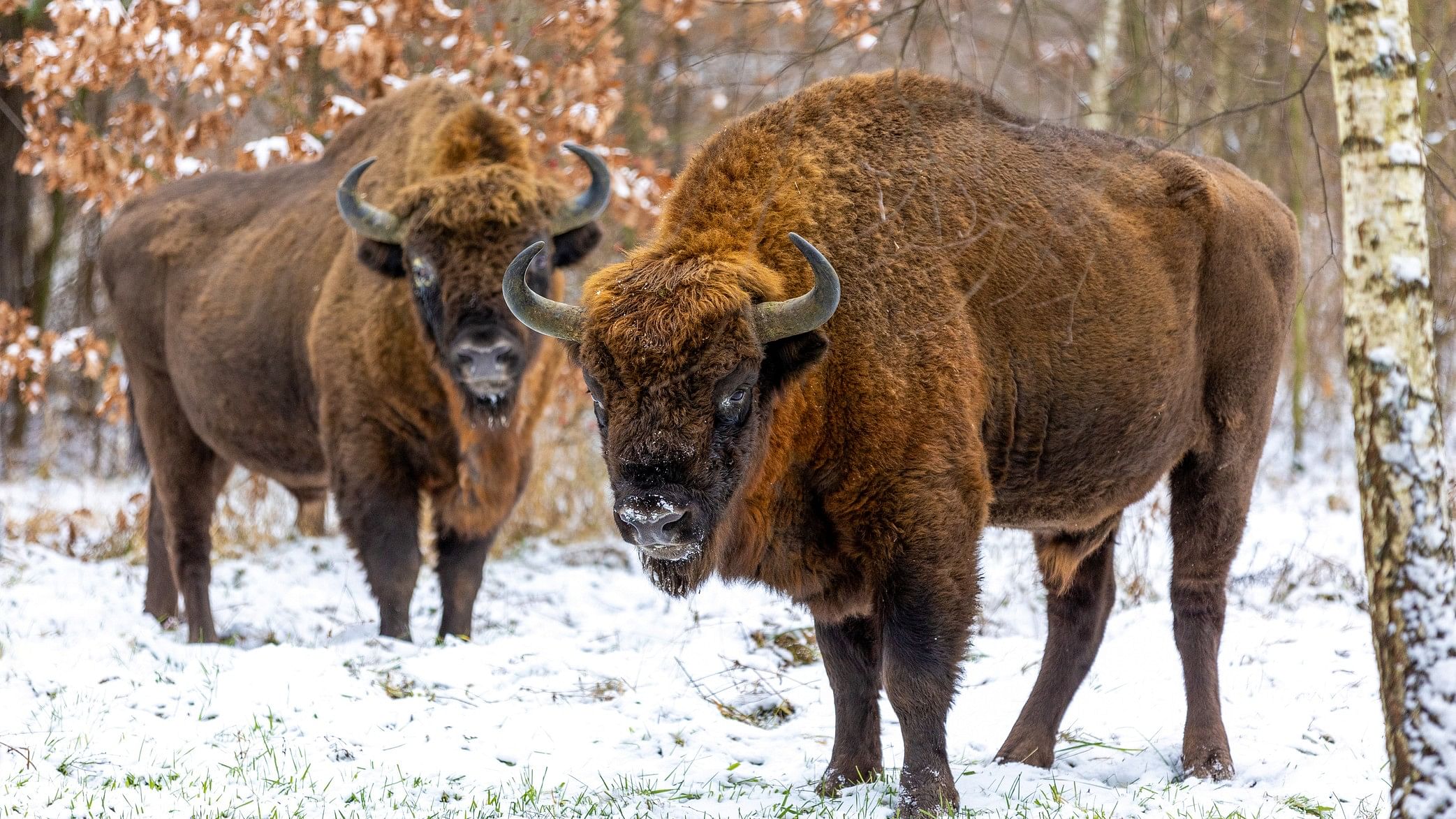
European Bison.
Credit: iStock Photo
A herd of 170 bison could help in reducing the impact of climate change by storing CO2 emissions equivalent to removing 43,000 US cars from the streets for a year, a new research has found. The herd of European Bison in question has been reintroduced to Romania’s Țarcu mountains after the disappearance of the species from Romania more than 200 years ago.
As per a report by The Guardian, the latest research, which has not been peer-reviewed, states that the bison herd grazing in an area of 50 sq km in the southern Carpathian mountains was found to potentially capture an additional 54,000 tonnes of carbon dioxide emissions. Interestingly, if the herd is removed from the picture, the carbon emissions into the environment would be 9.8 times more. However, the researchers have noted that the 9.8 figure could be 55% higher or lower.
According to the researchers, the figure corresponds to the yearly carbon emissions by a median of 43,000 average US petrol cars, or a median of 123,000 average European cars, which have higher energy efficiency standards.
Explaining the reason behind the findings, Professor Oswald Schmitz told The Guardian, “Bison influence grassland and forest ecosystems by grazing grasslands evenly, recycling nutrients to fertilise the soil and all of its life, dispersing seeds to enrich the ecosystem, and compacting the soil to prevent stored carbon from being released." Schmitz from the Yale School of the Environment in Connecticut in the US, is the lead author of the report.
Experts also believe that the findings of the research will take more time to accrue. More in-the-field research into the models used in the research will help us understand the role that large mammals play in capturing and storing carbon dioxide through their interactions with the ecosystem.
The model used by the latest research was developed by scientists at Yale School of the Environment and funded by the Global Rewilding Alliance, with the bison paper funded by WWF Netherlands.
Notably, bison fall under the near threatened category in the International Union of Conservation of Nature (IUCN) red list. In 2014, Rewilding Europe and WWF Romania reintroduced the species to Țarcu mountains. Today, their numbers have increased to 170, making them one of the largest free-roaming populations in the continent.
What is carbon capture and storage?
Carbon capture and storage (CCS) is a way of reducing carbon emissions into the environment and storing CO2. The process happens naturally with the help of carbon sinks like oceans, soil and forests.
The carbon sinks absorb more carbon then they release. Living things take in and store carbon through natural processes too, but when ecosystems are disturbed — either by nature or by humans — that stored carbon gets released back into the environment. Animals, large mammals mostly, help maintain the ecological balance.